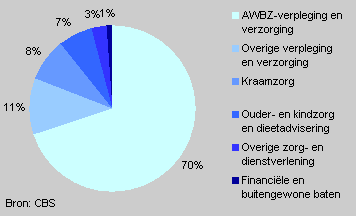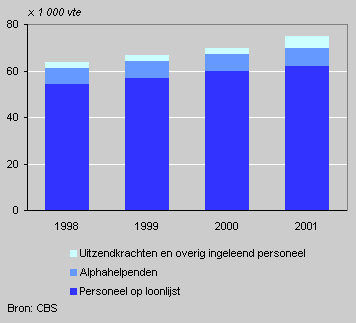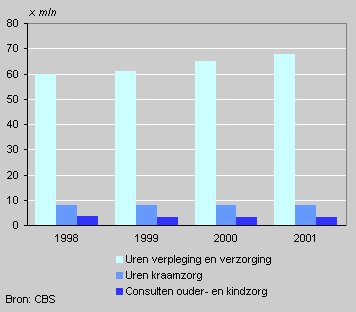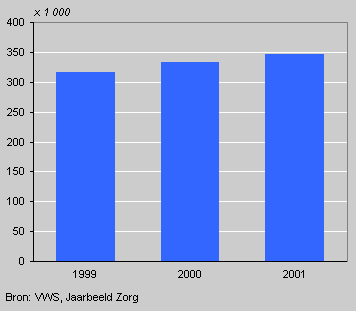Sharp rise in spending on home care

Spending on home care in the Netherlands rose by 15.1 percent in 2001 to 2.8 billion euro. This category of spending rose by more than spending on health and welfare care in the same period.
Spending on home care and total care

Extra costs to reduce waiting lists
Spending on home care has mainly increased because of the extra resources made available by the government to reduce waiting lists in the nursing and care sector.
The demand for home care is also increasing, pushed up by the growing number of elderly people, shorter hospital stays and the fact that people requiring help tend to delay a move to a home, and live independently for longer.
Spending on home care by activity

AWBZ nursing and care account for 70 percent
Housework and personal care, and nursing care at home for people who are ill, disabled or elderly account for most spending in this category. Nursing and care account for more than 80 percent of the home care budget, of which 70 percent falls under the Exceptional Medical Expenses Act (AWBZ)
Maternity care (accounting for 8 percent of the budget), child health clinics and dietary advice (7 percent) are other main cost items.
Labour volume

Five thousand extra full-time jobs
Home care organisations accounted for nearly 75 thousand full-time jobs at the end of 2001, 5 thousand more than in 2000. Half of these extra jobs were done by agency workers and other temporary staff. Together with the ‘alpha’ home-helps, the latter group account for 17 percent of the labour volume of home care organisations. The other 83 percent of the labour volume consists of staff employed on a permanent basis.
Production volume

Slower growth for production volume
The number of hours of nursing and care provided by these staff rose from 65 million in 2000 to nearly 68 million in 2001; the hours of maternity care fell by 1.7 percent to 7.8 million hours, which corresponded with the decrease in the number of births in this period.
The number of visits to child health clinics has remained fairly constant in recent years, at 3.3 million.
Clients receiving AWBZ care and nursing

More clients for home care
In 2001 nearly 347 thousand clients were registered with home care organisations for AWBZ nursing and home care. This is 4.1 percent more than in 2000.
Martin Boon